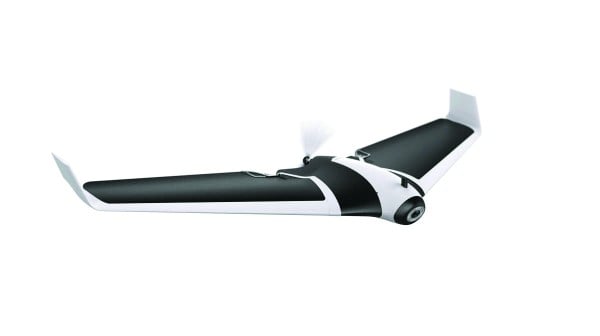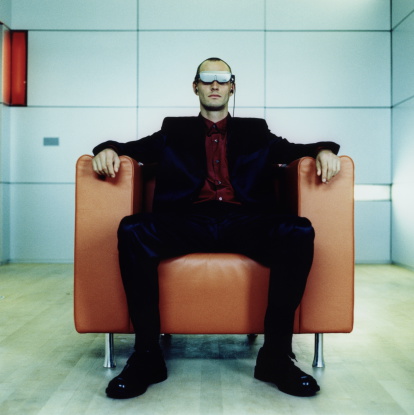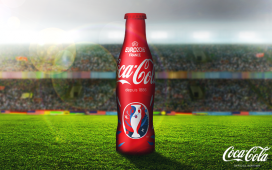Not only did Khaled Akbik make it back from Las Vegas, he also tells us all about what he saw at last month’s Consumer Electronics Show
As the world’s largest exhibition of its kind, featuring tech brands both big and small, the Consumer Electronics Show (CES) is the battlefront in terms of products and innovations, all vying for the attention of consumers, the media and the industry.
Just a few stats to indicate the scale: 3,800 exhibitors, more than 2.47 million square feet of space and more than 170,000 industry professionals, of which 50,000 were from outside the United States. The reason why they all congregate in Las Vegas is to see the future being written in front of their very eyes.
While the conference is all about change and development, one constant about CES is that it remains the strongest indicator of what the consumer electronics industry will be focusing on over the next two to three years. In 2016, the focus was almost entirely on wearables, drones, self-driving and smart/connected cars, and virtual reality (VR) sets.
Wearables
Wearables, to most consumers, mean smartwatches and perhaps even Google Glass. At CES 2016, these were taken to a whole new level.
There were brands showcasing wearables to help athletes with live data of their every move, allowing coaches to keep track of their performance and journalists to report on their vitals and movements in real time. Check out Intel’s Curie technology about a computer the size of a chip that can be fitted into pretty much anything to send out data in real time. One of Curie’s applications is smart clothes that change shape and form based on a person’s adrenaline level.
Besides fitness trackers, smartwatches and VR headsets, other notable wearables included smart suits that simulate physical scenarios, such as what happens to your body when you’re older. For the construction industry, there were hard helmets that project engineering plans on a face visor and smart glasses that transform construction blueprints into a 3D model of the actual project, with the ability to dive into each detail of the project and fish out its specifications.
For the media industry, the opportunity with wearables still lies in data. New data touchpoints that have not been factored into any psychographic modelling yet enable us to dive deeper than ever into consumers’ behaviours and preferences in order to build experiences.
Drones
The number of companies now making drones is unbelievable. The range of types, forms and shapes is astonishing and only shows how large this market actually is. This validates a Business Insider from May last year about how big the category is expected to get within the next 10 years.
While most drones perform similarly, the focus at CES this year was on drones that are easier to use by the average consumer. Unlike the earlier generation that required some skill to navigate and land, modern ones are much more manageable, with some of them having auto-landing modes. Others don’t need navigation at all, they simply follow you around based on your phone’s GPS location. You can even set a pre-determined path for the drone to cover on a map and it simply goes out, does its thing and comes back to you, while live streaming the whole thing onto your phone/computer using a built-in camera or a latched-on GoPro. One of the stars of the show was the Parrot Disco.
For the media industry, particularly in the content production side, drones have already had a major impact on how we shoot footage. They are a cheap and reliable way to get great shots while reducing the production costs of creating on-the-go content and democratising content production among the masses. Every production house, big or small, as well as both pro and amateur content creators, should, and most probably will, have one.
Self-driving and connected/smart cars
Car manufacturers have been investing heavily in smart cars and those that come as close to being self-driven as possible. Toyota, Kia and Ford, to name but a few, have showcased their vision and path to producing their versions of self-driving cars. Even though many of these projects are still in the concept/developmental mode, it is refreshing to see that in the not-too-distant future, some of these cars will roam our streets.
Moving closer to the present, smart cars and car consoles have also undergone a lot of change. Car manufacturers like Audi and Toyota displayed their latest Android Auto/Apple’s CarPlay features or their own proprietary solution, wowing audiences with their dashboard mock-ups.
Our industry has always found a way to use the latest tech innovations. The question this poses is whether a self-driving car means that the ‘driver’ can focus on targeted ads instead of driving, be it on their smart device or the car’s dashboard itself. If Android Auto and Apple’s CarPlay are utilised for advertising, what potential opportunities lie there? Perhaps ads can be served based on GPS location or destination, facilitating the booking of hotel rooms and making of restaurant reservations while on the go. There seems to be many opportunities to geo-target travellers like never before.
Virtual reality sets
Out of the four technologies highlighted here, this one is the closest to consumer retail points. Samsung’s Gear VR is already available in shops and HTC’s Vive will come out very soon. Companies left, right and centre – both known and unknown – are jumping on the bandwagon, creating their own VR sets that serve more industrial-focused purposes.
HTC’s Vive, which focuses on virtual reality gaming, came out as the clear winner at CES, receiving the CES 2016 Innovation Award. From a frame refresh rate and processor capability perspective, it really is the best of the bunch, though you can look a bit ridiculous when you’re in the midst of it all.
Samsung’s Gear VR and its parent, Facebook’s Oculus Rift, are built around 3D content rather than gaming. This year, the company invested heavily in showcasing what its Gear VR is capable of.
As VR headsets become common household items for gamers and content consumers (much like Xbox and PlayStation currently are), and as content moves more towards becoming experiential and immersive rather than static, advertisers will advance the quality and format used to match people’s expectations.
At OMD UAE, our innovation department is already set up to help clients move in that direction. Whether a brand outsources content production or does it in-house, it is certainly becoming a more integral component of the marketing mix and technological advancements will continue to propagate this.
Khaled Akbik is director of social media at OMD UAE











